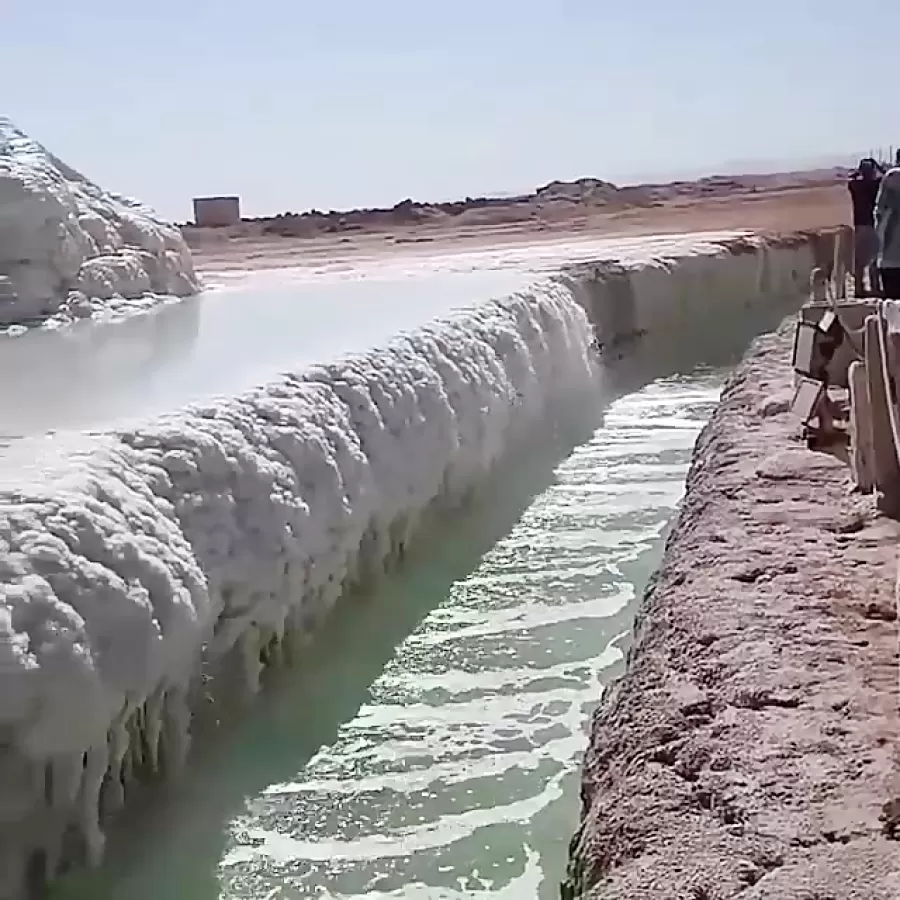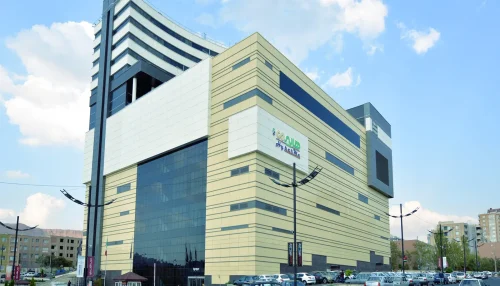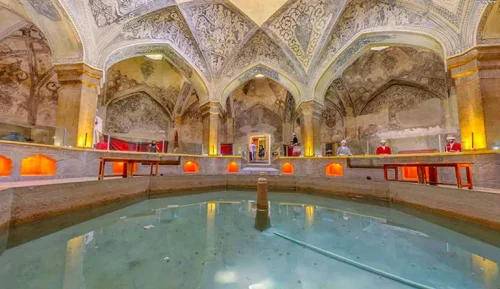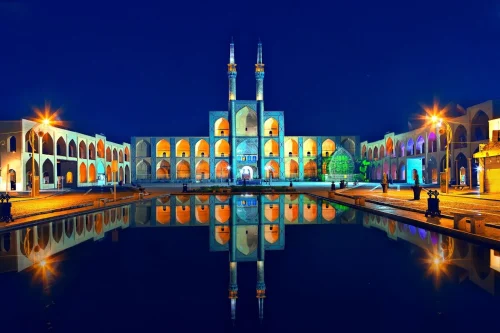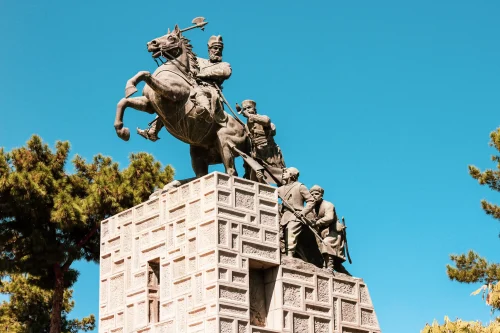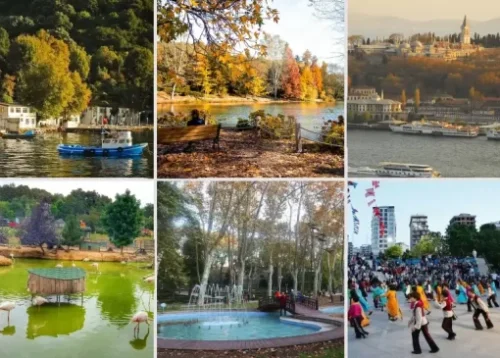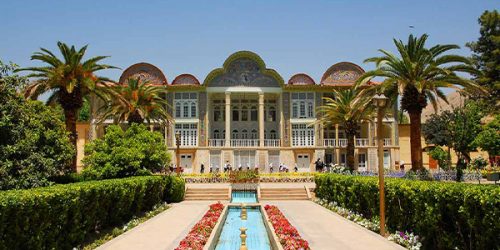Potassium Salt Waterfall Esfahan: A Comprehensive Visitor’s Guide and Attractions
A Comprehensive Visitor’s Guide to Potassium Salt Waterfall Esfahan
Attractions Near Potassium Salt Waterfall Esfahan
Visit Potassium Salt Waterfall Esfahan: Complete Guide to Nearby Attractions
The Potassium Salt Waterfall in Esfahan is one of Iran’s wondrous natural attractions, situated 100 kilometers southwest of Esfahan. Known for its mineral salts, this waterfall appears in glittering white and silver hues. This natural marvel is an enthralling spot for nature lovers and adventure travelers.
You can easily drive to this area by car. The access route to the Potassium Salt Waterfall Esfahan is via the Esfahan-Yazd road and then taking the secondary road towards the village of Potas.
If you plan to travel to this destination in a group, you can contact Iran Charter for tourism services. Iran Charter offers group tours to the Potassium Salt Waterfall Esfahan, providing necessary amenities and guidance.
For more information about attractions near the Potassium Salt Waterfall Esfahan, visit the Iran Charter website or call 02191091190.
Note that Iran Charter does not offer any additional services like seat selection or ticket discounts.
During your visit to the Potassium Salt Waterfall Esfahan, you can also explore nearby attractions such as:
- Village of Potas: Located near the salt waterfall, the village of Potas was historically known as the Salt City due to its salt mines. You can explore the narrow alleys and simple lifestyle of its residents.
- Golestan Spring: A short distance from the salt waterfall, Golestan Spring offers clear and cool water, ideal for leisure and relaxation.
- Salt Mountain: Another nearby attraction, the Salt Mountain is distinguished by its mineral salt deposits, exhibiting a bright white appearance. Hiking trails are available for climbing the mountain.
- Salt Mines: Numerous salt mines are located around the salt waterfall, extracting mineral salts used in various industries.
Remember to protect the environment of this region during your visit to the Potassium Salt Waterfall Esfahan.
For more details on the Potassium Salt Waterfall Esfahan and nearby attractions, visit the Iran Charter website or call 02191091190.
Iran Charter wishes you a pleasant and memorable journey.
Location of Potash Salt Waterfall in Isfahan: How to Access?
The Potash Salt Waterfall in Isfahan is one of the unique natural attractions of Isfahan province, located in Khur and Biabanak County. This waterfall is situated in the Salt Potash village, approximately 290 kilometers east of Isfahan. To access the Potash Salt Waterfall, you can first reach the city of Khur and Biabanak by personal vehicle or public transportation. From there, take the Khur-Tabas road to reach the Potash mining complex. After entering the mining complex, continue for another 10 kilometers on the Mesr Desert road to reach the Salt Potash village and eventually the waterfall. Accessing this waterfall requires a suitable vehicle and preparation for desert travel conditions. It is also recommended to carefully review the area’s map and carry necessary equipment to ensure a smooth and hassle-free trip.
History of the Potash Salt Waterfall in Isfahan
The Potash Salt Waterfall in Isfahan has a history of nearly 50 years and is considered a symbol of tourism development in Isfahan province. This waterfall was formed as a result of the activities of the Potash mining complex. At the beginning of mining activities in the area, a salt-laden lake was created, where potassium hydroxide salts settled with the process of water evaporation, forming a white salt mountain. The Potash Salt Waterfall flows from the salt mountain and, as a unique natural phenomenon, attracts many domestic and international tourists. In 1400 AH, the Potash Salt Waterfall was officially registered in Iran’s list of natural monuments, highlighting the importance and value of this tourist attraction.
Facilities at the Potash Tourist Village
The Potash Tourist Village provides a variety of facilities to offer a comfortable and enjoyable experience for visitors. These facilities include uniquely designed salt suites, restaurants, and cafes with diverse menus, a swimming pool, and a salt bath. Additionally, a well-equipped observatory is available for astronomy enthusiasts to observe the night sky. For those interested in sports activities, playgrounds and motor-racing tracks are accessible. Furthermore, wooden gazebos within the village grounds offer a perfect spot for relaxation and enjoying the natural scenery surrounding the waterfall.
Best Time to Visit Potash Salt Waterfall in Isfahan
Considering the arid and tropical climate of the Potash Tourist Village, the best time to visit the Potash Salt Waterfall in Isfahan is during the fall and winter seasons. During these seasons, the weather is moderate and pleasant, making it suitable for desert tourism. The hot and oppressive summers may be unpleasant for some tourists, so it is recommended to postpone your trip to the cooler seasons. Additionally, early spring and the Nowruz holiday can also be a good time to visit, although significant warmth can be felt during the months of May and June. Ultimately, the cool nights of fall and winter, with a starry sky, provide excellent opportunities for photography and enjoying the natural beauty of the waterfall.
Recommended Activities at the Potash Tourist Village
The Potash Tourist Village, with its diverse attractions, offers various recreational activities for visitors. These activities include hiking and mountain climbing in the desert and sandy mountains. Also, camel riding around the village and desert is a unique experience not to be missed. For diving enthusiasts, the Potash Salt Lake allows diving in saline waters, although it is recommended to proceed with caution. Photography is another popular activity in this area, as the desert landscape and salt waterfall provide unique opportunities for capturing beautiful images. Additionally, temporary classes in visual arts and astronomy are among the other recreational facilities in the village.
Accommodation Options at the Potash Salt Village
Visitors have a variety of accommodation options at the Potash Tourist Village. Salt suites with local design and suitable amenities are one of the best options for direct accommodation in the heart of the village. These suites offer easy access to restaurants and observatories, providing a pleasant experience for residents. Besides salt suites, traditional hotels in the Mesr Desert and Ye-to Khur and Biabanak also offer accommodation with more facilities and traditional design. For those seeking a closer experience with nature, eco-lodges in Khur and Biabanak provide simpler amenities in a friendly environment, making for a suitable choice.
Attractions Around Potash Salt Waterfall in Isfahan
The Potash Salt Waterfall in Isfahan is not the only major attraction within the Potash Tourist Village; the surrounding area is full of fascinating and attractive sites as well. The Mesr Desert, with its yellow-hued hills and warm sands, offers a perfect environment for desert hiking and camel riding. The Salt Lake Khur, located 40 kilometers from the village, provides excellent opportunities for photography with its distinctive turquoise color and panoramic views. Garmeh Village, with its hot springs and 2700-year-old ancient citadel, is a suitable place for visiting and exploration. The village of Arusan Golestan, with its dense palm groves and local handicrafts, offers a different experience of desert culture and life to visitors.
Nature Exploration and Photography at Potash Salt Waterfall in Isfahan
With its stunning natural scenery, the Potash Salt Waterfall in Isfahan is considered one of the best places for nature exploration and photography in Isfahan province. Specifically, the turquoise color of the salt lake and its white waterfall provide unique opportunities for professional photographers and photography enthusiasts. Starry nights and special lighting on the waterfall add beautiful effects to the scene, creating memorable images. Designed hiking trails around the waterfall allow for closer observation of nature’s details and the region’s wildlife. Additionally, the dark and bright night skies of the desert make it an ideal environment for photographing galaxies and stars.
Future Prospects for Potash Tourist Village Development
With consistent growth and development, the Potash Tourist Village plans to increase its facilities and attractions. In the future, larger hotels, modern planetariums, wildlife parks, artificial lakes for boating, land and aerial safaris, motor racing tracks, tennis courts, archery fields, and beach soccer fields are expected to be added to the complex. These developments not only enhance the visitors’ experience but also offer a greater variety of recreational and sports activities.
Safety Tips and Recommendations for Visiting Potash Salt Waterfall
Visiting the Potash Salt Waterfall in Isfahan requires adhering to safety tips and important recommendations to ensure a safe and enjoyable experience. First, it is advisable to travel to this location in the fall and winter seasons when the weather is more temperate, and to avoid the extreme summer heat. Second, while walking on desert paths and areas with limited vegetation, be sure to wear appropriate and durable shoes and avoid dangerous viewpoints. Third, as desert weather can change rapidly in temperature, carrying extra clothing and sunscreen is essential. Fourth, be sure to carry enough drinking water with you to prevent dehydration during the desert visit. Fifth, it is recommended to avoid driving in desert paths alone and, if possible, travel with a local guide. Lastly, following the principles of environmental conservation and not damaging the nature surrounding the waterfall plays a significant role in preserving the beauty and significance of this natural attraction.
FAQ
- Where is Potash Salt Waterfall located?
- The Potash Salt Waterfall is located in Isfahan province, in the Potash Tourist Village near the city of Khur and Biabanak. This waterfall is situated 30 kilometers from the Khur-Tabas road.
- How to reach Potash Salt Village?
- To reach the Potash Salt Village, first travel from Isfahan towards the city of Khur and Biabanak. Then, proceed 30 kilometers on the Khur-Tabas road to reach the Shakarab area and continue towards the Potash mining complex. From the Potash mining complex, another 10 kilometers journey is required to reach the Potash Salt Village.
- What is the height of Potash Salt Waterfall?
- The Potash Salt Waterfall flows from the white salt mountain with a height of approximately 25 meters.
- What is the best time to visit Potash Salt Village?
- The best time to visit the Potash Salt Village is the second half of the year, meaning the fall and winter seasons. During these times, the weather is more moderate and suitable for tourism. Early spring can also be a good option.
- What are the amenities at Potash Salt Village?
- The Potash Salt Village offers salt suites with local design, restaurants, a cafe, a swimming pool, a salt bath, and an observatory. Recreational facilities such as hiking, camel riding, and photography are also available.
- What recreational activities are available in Potash Salt Village?
- Activities in the Potash Salt Village include hiking and mountain climbing, camel riding, photography, diving in the salt lake, and visiting salt suites.
- How is accommodation in Potash Salt Village?
- Accommodation in the Potash Salt Village is possible, with key options including salt suites, traditional hotels in the Mesr Desert, and eco-lodges in Khur and Biabanak County. Each of these accommodations offers suitable amenities and design.
- What is the history of Potash Tourist Village?
- The Potash Tourist Village was established about 50 years ago alongside the start of activities at the Potash mining complex. Over time, with the formation of the Potash Salt Lake, it became a natural tourist attraction and was added to Iran’s list of natural monuments in 1400 AH.
- What is the composition of the Potash Salt Waterfall?
- The Potash Salt Waterfall is formed from the Potash Salt Mountain as a result of water evaporation from the salt lake. It is particularly known for the unique turquoise color of the salt lake.
- What is the flora and fauna of Potash Salt Village like?
- The flora of Potash Salt Village includes herbaceous plants, shrubs, and wild bushes such as Tamarisk, Nettle, Thistle, and Convolvulus. The fauna is similar to desert wildlife, including sand cats, various snakes, and gazelle.
- Why is Potash Salt Waterfall so famous?
- The Potash Salt Waterfall is famous due to its natural formation, 25-meter height, and the turquoise color of its salt lake waters. It is recognized as the world’s first salt waterfall and attracts many domestic and international tourists.
- What other nearby attractions are available near Potash Salt Village?
- Close to the Potash Salt Village, there are other attractions such as the Mesr Desert, Salt Lake Khur, Garmeh Village, and other natural and historical sites that can enrich your tourist experience.
- What are essential requirements for traveling to Potash Salt Village?
- Essential requirements for traveling to Potash Salt Village include season-appropriate clothing, hiking shoes, sufficient food and water, personal and safety equipment, and navigation tools such as maps and a compass.
- How can maps and navigation be used during a trip to Potash Salt Village?
- Using detailed regional maps and a compass for navigation in the desert is crucial. Additionally, carrying GPS devices and having a local guide can prevent getting lost.
- What are the weather conditions in Potash Salt Village?
- Potash Salt Village is located in an arid and tropical climate. Summer temperatures can reach up to 42 degrees Celsius, and in winter, it can drop below zero. Annual rainfall is around 100 millimeters.
- What are the costs of visiting Potash Salt Village?
- Entering the Potash Tourist Village and visiting the salt waterfall is free. However, accommodation in salt suites and the use of other recreational facilities incur costs.
- What equipment is needed for a trip to Potash Tourist Village?
- Required equipment includes suitable hiking shoes, season-appropriate clothing, sufficient food and water, personal and safety items such as a first-aid kit, sunscreen, maps, and a compass.
- What are the important tips for traveling to Potash Salt Village?
- Important tips include choosing the right travel time, bringing appropriate clothing and equipment, efficient water consumption, safe desert driving, and environmental conservation.
- What is the future outlook for Potash Salt Village?
- In the future, Potash Salt Village plans to add facilities such as hotels, planetariums, artificial lakes, safaris, wildlife parks, and other recreational amenities to enhance the visitor experience.

